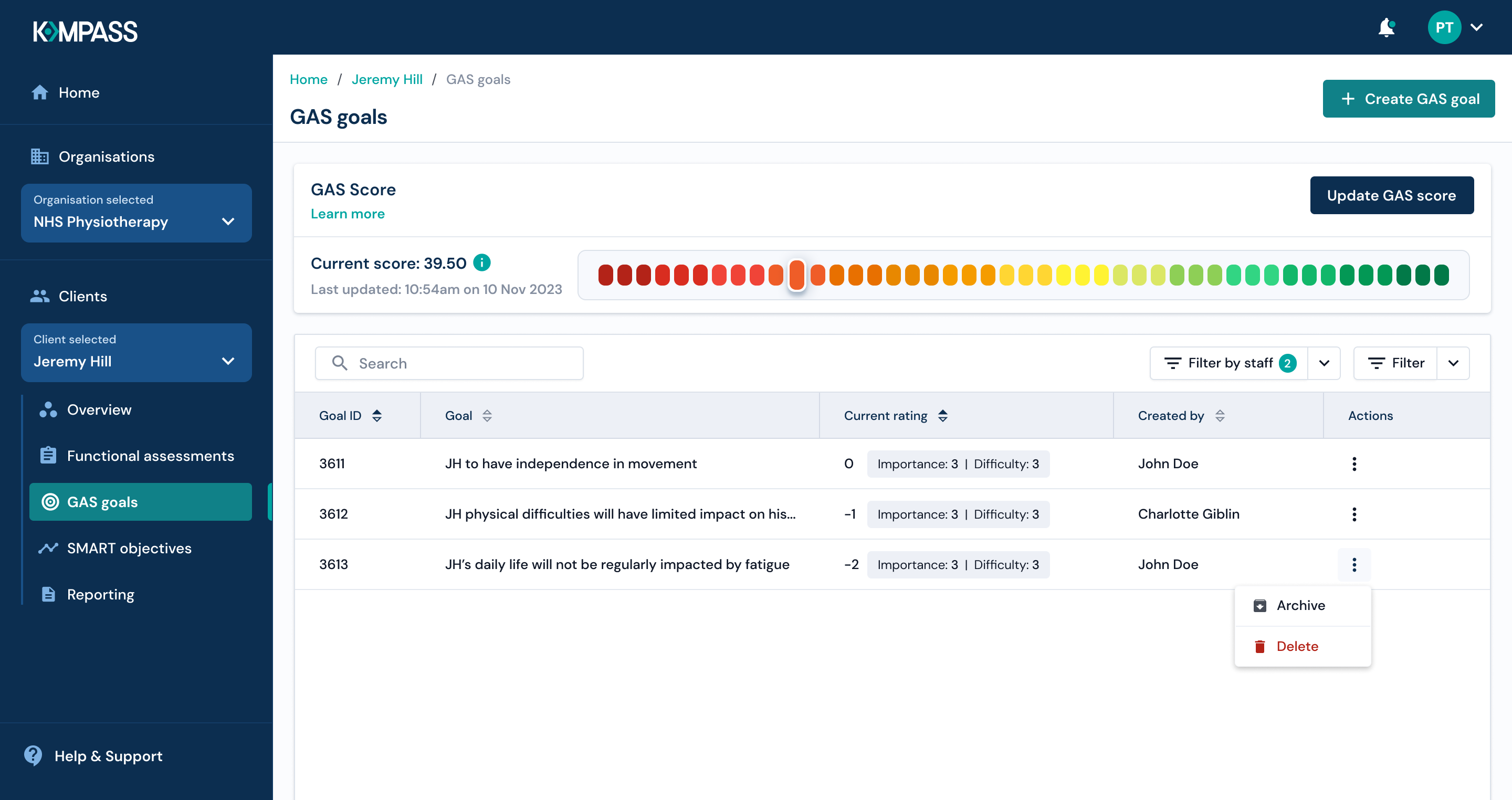Goal setting in rehabilitation

Goal setting is a cornerstone of effective rehabilitation, providing a structured framework to guide both the patient and the interdisciplinary team. It ensures that rehabilitation efforts are focused and aligned with the patient's unique needs and circumstances.
Goals should be patient-centred, reflecting the individual's priorities, values, and desired outcomes. This approach helps ensure that the goals are relevant and engaging, motivating the patient to take an active role in their recovery journey.
Clear, well-defined goals shape the rehabilitation plan by identifying specific objectives and outlining the steps required to achieve them. They serve as measurable milestones, allowing both the patient and the rehabilitation team to track progress effectively.
For the rehabilitation team, goals provide a shared understanding of the client’s needs and aspirations. This shared perspective enables coordinated efforts to address key challenges and promote meaningful progress throughout the rehabilitation process.
Ultimately, patient-centred goals ensure that rehabilitation is focused, purposeful, and aligned with the client's path to improved health and functionality. By establishing clear and achievable goals, rehabilitation becomes a structured and motivating journey toward recovery.
GAS goals
Kompass uses Goal Attainment Scaling (GAS) goals within the platform, an evidence-backed approach to rehabilitation goal setting. Goal Attainment Scaling (GAS) is a method of scoring and tracking individual goals throughout an intervention. It provides a standardised yet flexible approach to outcome measurement by considering the uniqueness of each individual’s goals. It accounts for factors such as importance and difficulty in goal weighting, presenting a patient-centred approach to goals. Goal attainment scaling (GAS) allows detail about a patient’s goal progress to be tracked, giving them more motivation to engage in rehabilitation therapy (Wade, 2009).
GAS scoring
GAS scores use a 5-point scale to measure goal attainment:
+2:
Much better than expected level of achievement
+1:
Somewhat better than expected level of achievement
0:
Expected level of achievement
-1:
Somewhat worse than expected level of achievement
-2:
Much worse than expected level of achievement
Additionally, each goal is rated for:
Importance (0-3, with 3 being most important)
Difficulty (0-3, with 3 being most difficult)
The importance rating ‘weights’ the goal in the final calculation. The composite GAS score is derived by summing attainment levels multiplied by relative weights, which is then converted into a standardised measure. This allows for quantitative tracking of goals and progress.

Ready to streamline goal-setting?
Contact usGetting started with GAS scores
This structured approach ensures meaningful and measurable goal setting for effective rehabilitation outcomes:
Understand the components:
To effectively use Goal Attainment Scaling (GAS), it’s important to understand its key elements: the current score, importance score, and difficulty score. The current score establishes a baseline for tracking progress, the importance score prioritises goals based on their value to the patient, and the difficulty score ensures goals are challenging yet achievable. A clear understanding of these elements helps in setting meaningful and realistic goals.
Set realistic and measurable goals:
Goals should be specific, achievable, and aligned with the patient’s needs. Limiting goals to three or four at a time allows for better focus and progress tracking. Clearly defined goals provide motivation and direction, making it easier for both patients and rehabilitation teams to assess achievements and make necessary adjustments.
Establish baseline scores:
Baseline scores should accurately reflect the patient’s current abilities. Most goals should start at -1 to allow room for improvement while accounting for setbacks. If the patient is already at their lowest level, a baseline of -2 can be used. Setting realistic baseline scores ensures that progress can be effectively tracked and adjusted as needed.
Regularly review and adjust goals:
Rehabilitation is a dynamic process, and goals should be reviewed regularly to reflect the patient’s progress and changing needs. Regular check-ins allow for goal adjustments based on achievements or setbacks, ensuring that objectives remain challenging but attainable. This approach helps maintain motivation and keeps the rehabilitation process aligned with the patient’s evolving capabilities.
Steps to Effective Rehabilitation
Objective Setting
Translating goals into actionable steps for progress.
Goal Setting
Creating structured, patient-centered goals to guide rehabilitation.
Identify Problems
Highlighting key areas requiring intervention based on the assessment.
Functional Assessment
Establishing a comprehensive understanding of the patient's abilities and limitations.